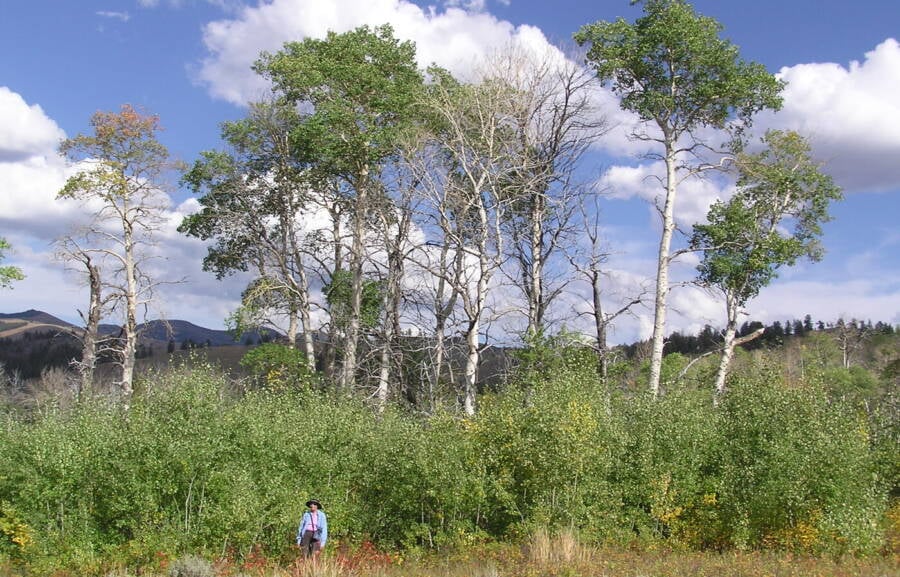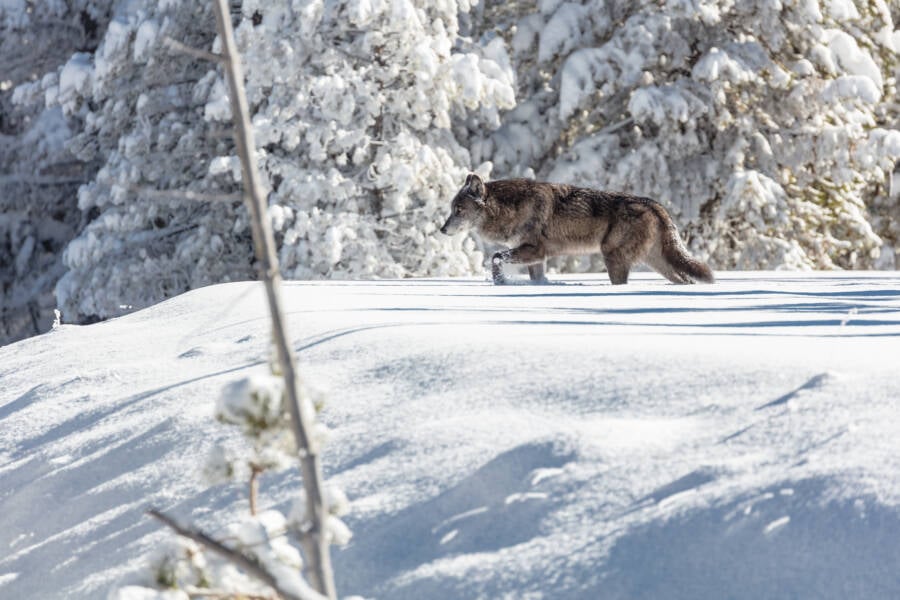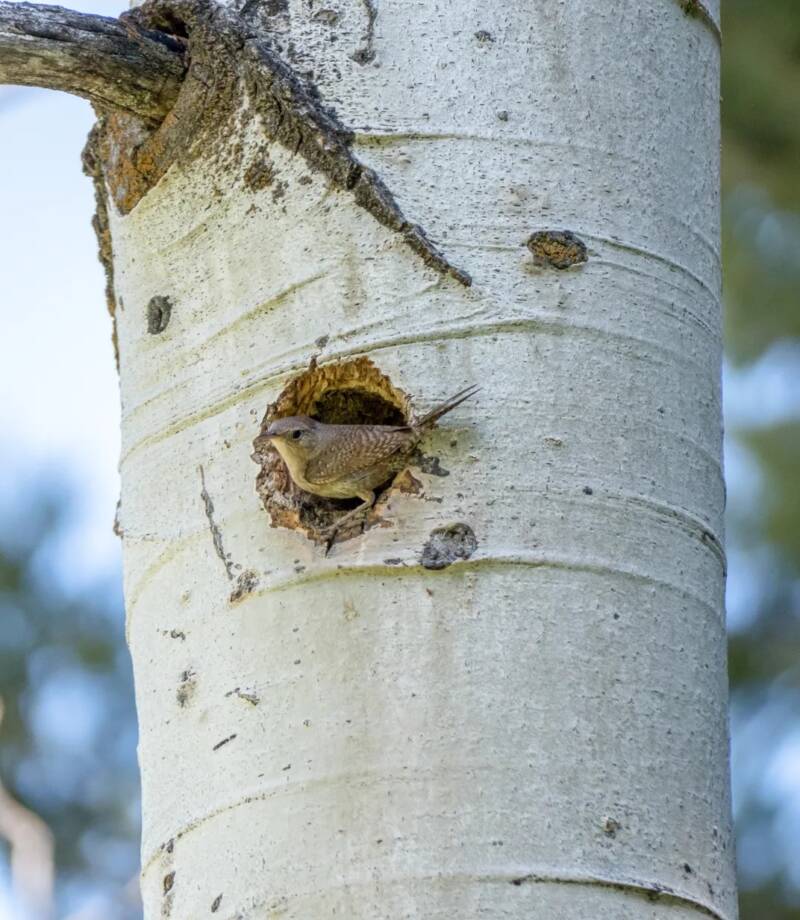The reintroduction of gray wolves to Yellowstone National Park in 1995 led to a decrease in the elk population, which has now allowed young aspen saplings to grow before they are eaten.

Oregon State UniversityScientists have found evidence of a resurgence in aspen trees at Yellowstone National Park.
Young aspen trees are now growing in abundance in the northern part of Yellowstone National Park thanks to the reintroduction of gray wolves to the park’s ecosystem, according to a new study.
The aspens struggled for decades due to overgrazing from a booming elk population, a result of the disappearance of gray wolves from the park in the 1930s. By the 1990s, surveyors couldn’t find a single aspen sapling in the entire park. Now, for the first time in 80 years, new aspens are growing in Yellowstone.
The Aspen Resurgence Is Tied To The Reintroduction Of Wolves To Yellowstone
In the 1930s, gray wolves vanished from Yellowstone due to hunting, habitat loss, and government eradication programs. Their absence from the park had massive consequences.
The wolves were the primary predators of elk in the area, leading to the rapid growth of the elk population in the wake of the wolves’ local extinction. Among other vegetation, these deer fed on Yellowstone’s quaking aspen trees, so all of the saplings were eaten before they reached adulthood.

Jacob W. Frank/National Park ServiceA wolf hunts in the snow at Yellowstone National Park.
This prevented new trees from replacing old ones that died, putting the future of the aspen tree population in Yellowstone at risk.
Scientists have now found evidence of a resurgence in the aspen population for the first time in 80 years, however. A recent study published in the journal Forest Ecology and Management has linked this boom directly to the reintroduction of gray wolves in the 1990s.
Scientists found that 43 percent of the sites they surveyed contained young aspen trees with trunks at least two inches in diameter, signifying growth not seen in decades. This is thanks to the elk population’s decline since wolves have been back at the park.
The scientists also found that the density of aspen saplings had increased 152-fold between 1998 and 2021.
“It doesn’t mean that they’re not going to get killed or die from something, but it’s a pretty good indication that we’re getting some new trees,” lead author Luke Painter told Live Science. “As they get bigger, they get more resilient.”
The Reintroduction Of Gray Wolves Has Benefits Beyond The Aspen Population
The resurgence of aspen trees in Yellowstone National Park is good news for the local woodpeckers and tree swallows, which nest in the trunks of the trees. Other species, like beavers, will also benefit from the increase in available wood to eat and use for their dams.
“The reintroduction of large carnivores has initiated a recovery process that had been shut down for decades,” Painter said in a statement published by Oregon State University.
Scientists involved with the study say this is evidence of a “trophic cascade,” or the ripple effects of human interference with a food web. Others believe there are additional factors at play.

Diane Renkin/National Park ServiceAspen trees are used by woodpeckers and tree swallows to nest.
For instance, the elk population may have plummeted due to human hunting practices, as well. The deer are also still a food source for other predators, such as grizzly bears. The bison population has increased in recent years, too, which could have additional impacts on the park’s flora.
Effects from the wolves’ absence and reintroduction are still being felt. While the northern portion of Yellowstone appears to be seeing an aspen resurgence, other areas continue to struggle.
Still, Painter explained, “This is a remarkable case of ecological restoration. Wolf reintroduction is yielding long-term ecological changes contributing to increased biodiversity and habitat diversity.”
After reading about the flourishing aspen tree population at Yellowstone National Park, discover the story of John Colter, the adventurer who explored Yellowstone during the Lewis and Clark Expedition. Then, learn about Cody Clawson, the Boy Scout who was rescued near Yellowstone by Harrison Ford.





